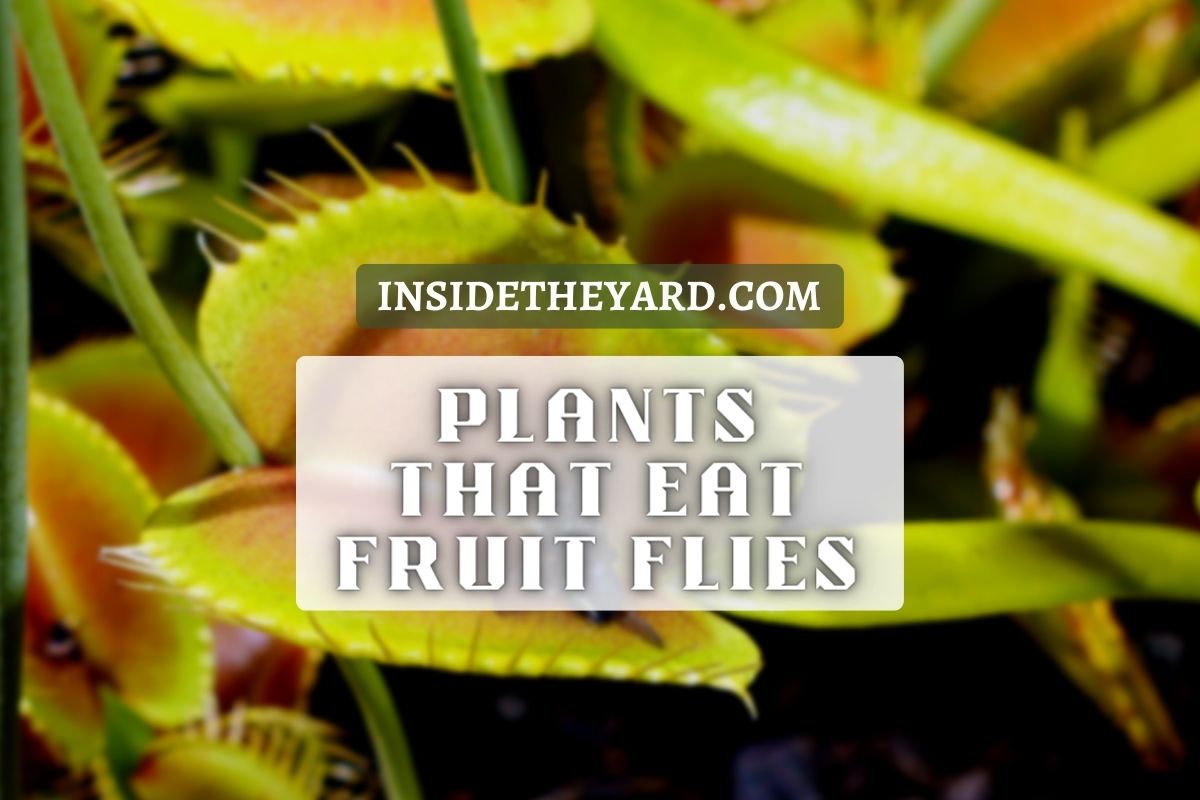What are the plants that eat fruit flies? When we think of carnivorous plants, we usually imagine venus flytraps or pitcher plants lurking in the dark corners of swamps and bogs, waiting to catch unwitting fruit flies, insects, and tiny frogs.
While these ambush predators do exist in nature, they aren’t the only kinds of carnivorous plants around – some species take the eat or be eaten principle to an entirely different level by eating fruit flies.
Suppose you have ever found fruit flies buzzing around your home and wondered how you might get rid of them. In that case, carnivorous plants are strange but fascinating creatures that can help eliminate those pesky fruit flies without the use of harsh chemicals or pesticides.
Read on to learn more about these interesting plants and how they work their magic to catch and consume their prey.
5 Plants That Eat Fruit Flies

In this article, we will look at these five beautiful carnivorous plants that are well known for eliminating fruit flies from home and garden.
- Venus flytraps (Dionaea muscipula),
- Pitcher plants (Sarracenia sp.),
- Sundews (Drosera sp.),
- Butterworts (Pinguicula sp.)
- Cephalotus follicularis
Each comes in a variety of species and grows in different conditions. But one thing they all have in common is their ability to trap and digest insects, including those pesky fruit flies. Here’s how they do it:
- The traps: These plants use leaves or flowers as traps for unsuspecting insects.
- Digestive juices: Once trapped, insects are slowly digested by enzymes secreted by plant cells; some also secrete digestive acids into their traps to break down prey more quickly.
- Nutrients: As nutrients from insect bodies pass through plant tissues, they’re absorbed and used to fuel photosynthesis.
- Respiration: While digestion occurs externally, respiration takes place internally.
- Moving on up: Some species can move up if there isn’t enough sunlight. Flypaper traps, such as sundews and butterworts, become active when insects land on them; pitchers contain fluid at first, then become sealed off so the prey cannot escape.
All in all, these plants might be creepy-looking, but they serve an essential purpose in our ecosystem: providing food for bugs who wouldn’t usually get it.
1.Venus Flytraps (Dionaea muscipula)
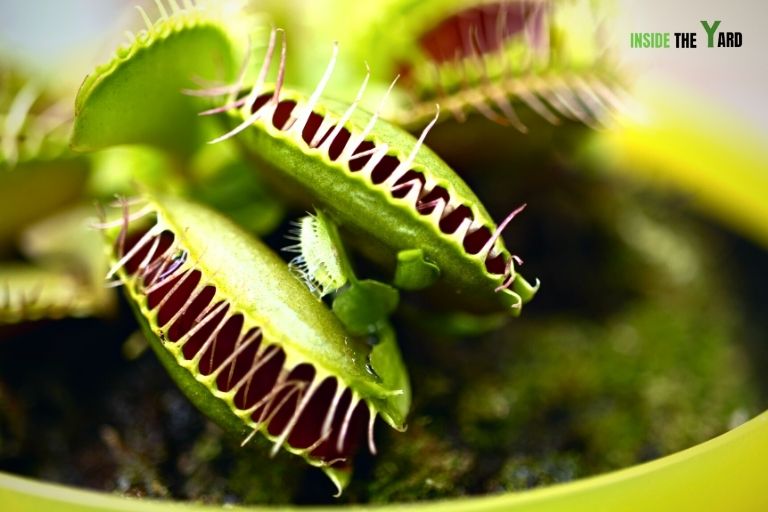
Found in wetlands and bogs in North and South Carolina, venus flytraps catch insects, arachnids, and even small amphibians like frogs.
The plant’s leaves are patterned with intricate ridges lined with sensitive hairs-which trap insects.
In response to contact, these leaves snap shut. Some species of venus flytrap will actually drown their prey rather than digest them; others absorb nutrients from their victims into underground bulbs through a process called photosynthesis.
Most flytraps can grow up to 12 inches (30 cm) tall. While some botanists classify Venus flytraps as annuals, they may live for decades.
They can also reproduce via flowers or seeds, but they don’t always produce offspring when they flower-so it’s more common for a new plant to sprout from an existing one.
Growing Tips For Venus Flytraps
Venus flytraps are tropical perennials and can be grown indoors or outdoors. They require bright, indirect sunlight and soil with a pH between 5.5 and 6.5. To propagate new Venus flytraps, simply divide an existing plant’s rhizome (the bulb-like stem) into two or more pieces-each with at least one leaf and replant them in fresh soil.
2. Pitcher Plants (Sarracenia sp.)
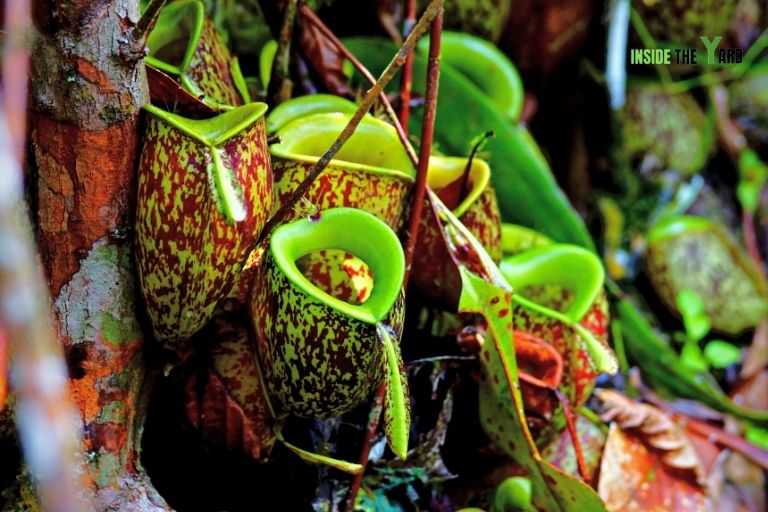
Known as the venus flytrap of North America, pitcher plants for fruit flies ensnare their prey with a trap lined with small hairs that sense movement. When an insect touches these hairs, it triggers a reaction causing leaves to fall over and form a deep pool of water.
Any insect inside that can’t escape drowns before being slowly digested by enzymes in its watery grave. Pitcher plants are interesting because they don’t need insects to pollinate them or provide nutrients, says David Taylor, author of Carnivorous Plants: Ecology and Evolutionary Biology.
They get everything they need, insects-including proteins for growth and reproduction. They’re basically eating animals all day long, he says. It makes you wonder if there is such a thing as plant blood.
Growing Tips For Pitcher Plants
Sarracenia is a temperate perennial, so they need a dormant period in winter. They can be grown outdoors in U.S. Department of Agriculture plants hardiness zones 8 through 11, but they’re easy to start from seed and grow indoors year-round.
Sow seeds on top of a moistened mix of peat moss and sand or perlite and place them in a sunny window with indirect light for about two weeks until germination.
3. Sundews (Drosera sp.)
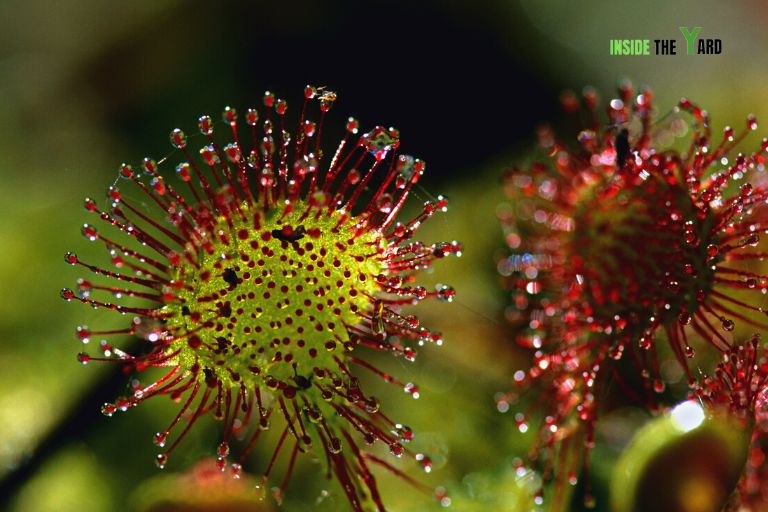
The sunny-colored sundew is native to Australia, New Zealand, and Tasmania. Despite their bright flowers, these petite plants prefer low-light conditions and thrive in small containers or jars where they can be kept indoors or outside on a porch.
Sundews are easy to grow-just poke a small opening into a jar lid (to allow for water drainage) and put it in indirect sunlight. You’ll want to keep your plant moist but not overly wet; a layer of pebbles at the bottom of your container will help with drainage.
Fruit flies are an ideal snack for your little carnivore; simply place them near your plant and watch as it slowly devours them. If you don’t have any fruit flies around, you can also feed your sundew small pieces of meat or fish.
Growing Tips for Sundews
Sundews plants for fruit flies are one of the wide varieties of carnivorous plants, meaning they derive nutrients from insects or other small animals. The best way to start growing your own sundew is by purchasing a small plant at your local nursery or garden center.
Sundews prefer warm temperatures and indirect sunlight, so you’ll want to keep them indoors in a sunny window or on a porch where they can get some sun without being scorched. They also like humidity, so be sure to mist them regularly.
4.Butterworts (Pinguicula sp.)
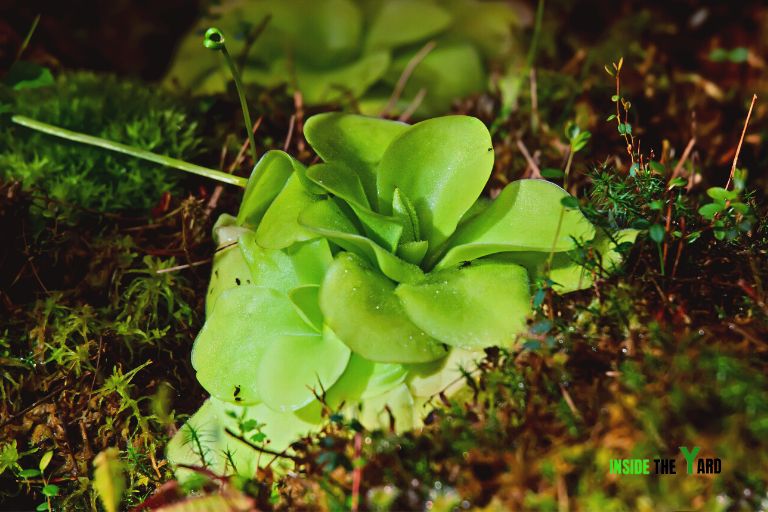
Although butterworts have a reputation for eating mosquitoes, they’re more likely to turn their deadly wrath on fruit flies. The leaves of butterworts are lined with tiny hairs and tiny glands that secrete a milky, insect-attracting liquid.
When hungry insects land on these leaves, they stick to their sticky surface and can’t get off. Butterwort secretes an enzyme in its digestive system to digest its prey alive, killing it painlessly.
Growing Tips For Butterworts
If you want to grow your own butterwort at home, be sure to give it lots of sunlight and water. It’s also important not to overwater your plant because they don’t like sitting in water or being kept too wet. They need some drainage room at all times.
5. Cephalotus follicularis
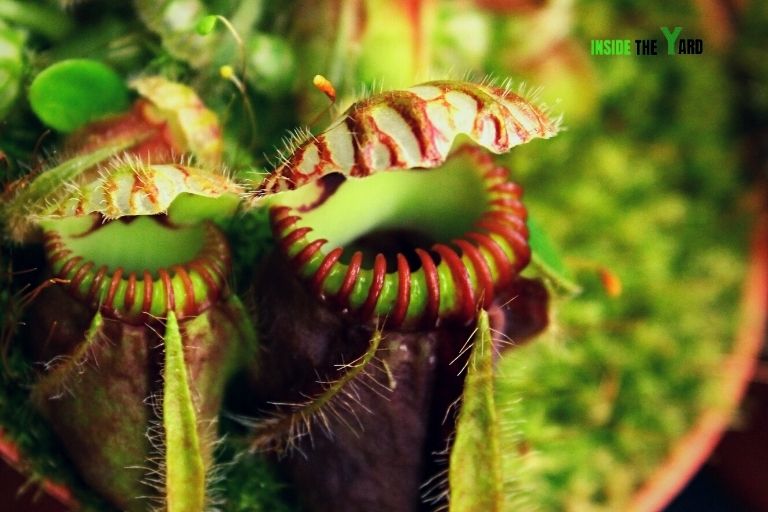
Though it may look like an alien fungus, the Cephalotus follicularis is a member of the Pitcher Plant family. Its liquid-filled pitchers contain an enzyme that traps, dissolves, and digests fruit flies that fall into the pitcher after mistaking it for food or water.
Growing Tips For Cephalotus follicularis
While many carnivorous plants tend to live in acidic soil with high mineral content, Cephalotus follicularis lives in mild to moderate climates with nutrient-rich soil.
Frequently Asked Questions (FAQs)
How to stop fruit flies from plants?
Fruit Flies lay their eggs in ripe fruits, vegetables, and grains, where they eventually hatch into maggots. You can stop fruit flies using carnivorous plants that eat house flies, using pesticides, insecticides, or even with homemade traps.
What keeps fruit flies away?
While there are many ways to kill and keep away fruit flies, perhaps one of the more unique methods involves using scents. Just deter them with scents. Also, you can use carnivorous plants that eat fruit flies.
Do venus flytraps eat fruit flies?
Yes, venus fly traps can devour fruit flies. Fruit flies are small enough to fit in a venus flytrap’s tiny mouth and have a sweet taste that attracts them to land on its leaves. Once they do, they fall into its pool of digestive juices and drown within seconds. However, it’s important to note that not all venus fly traps will be able to eat fruit flies – some may not be able to digest their wings or hard exoskeleton.
Are fruit flies attracted to plants?
Fruit flies are attracted to certain chemicals produced by some plants. They can be found on a variety of species, including Venus flytraps and pitcher plants. Both types of plants have evolved unique ways of trapping their prey in order to get nutrients from animal matter.
Conclusion
Growing carnivorous plants that can eat fruit flies as well can be a fun and rewarding hobby. There are plenty of exotic varieties out there, and with careful planning, you can grow some pretty amazing specimens.
It is well worth your time to invest in learning how to care for these carnivores if you enjoy gardening or natural science.
If nothing else, you’ll end up with some really interesting conversation pieces for your home. But watch out: if you feed them enough bugs (or flies), they might just turn on YOU!
